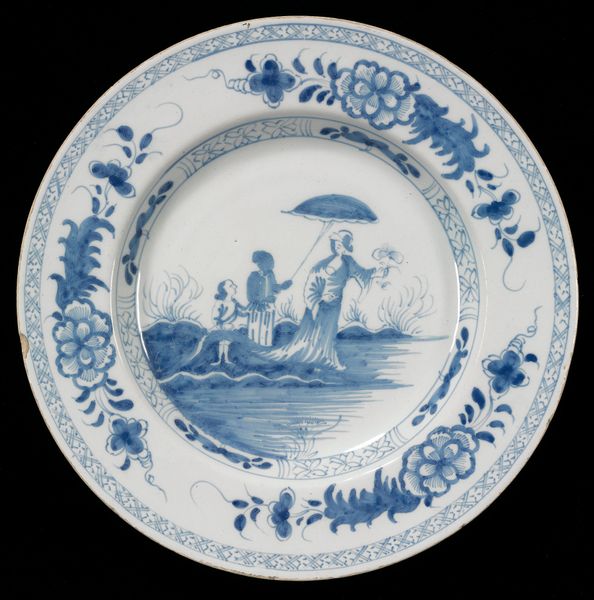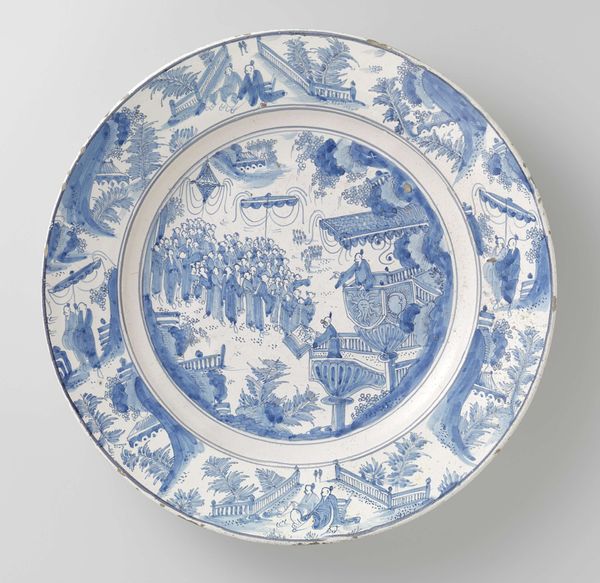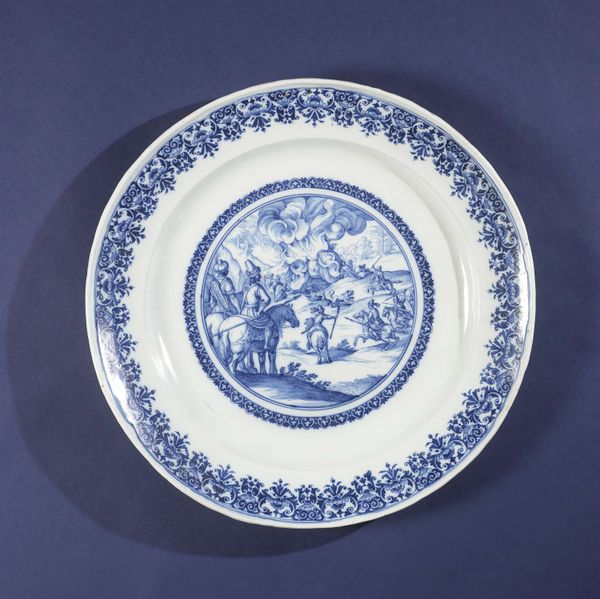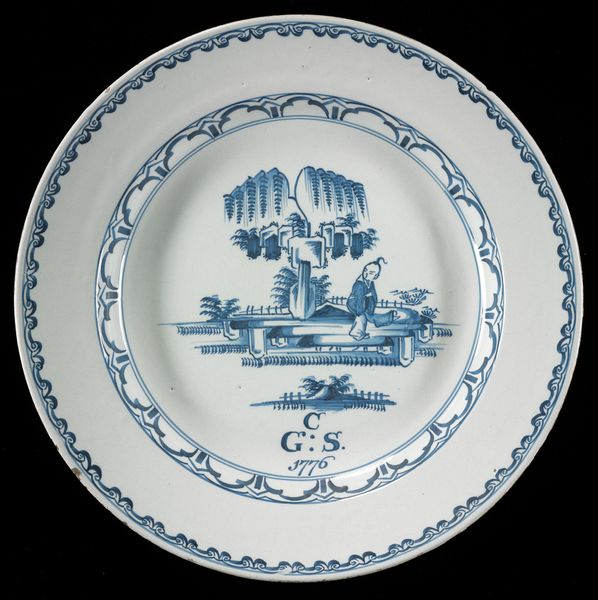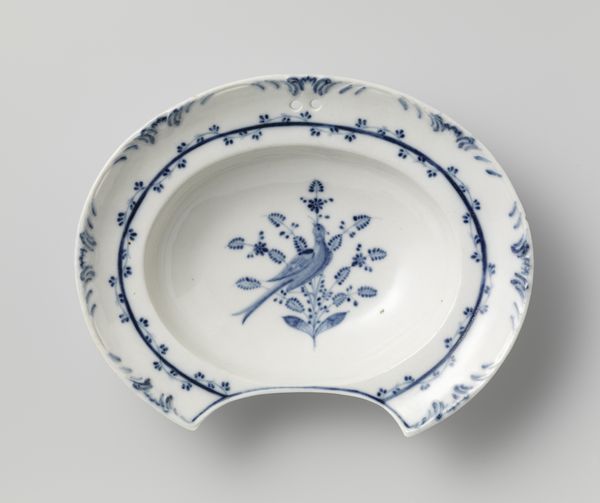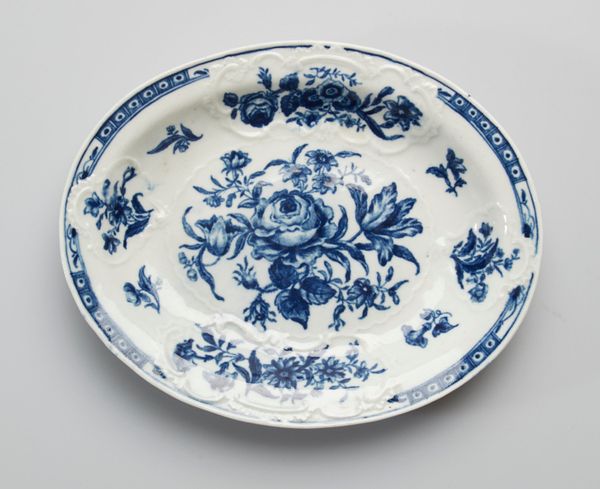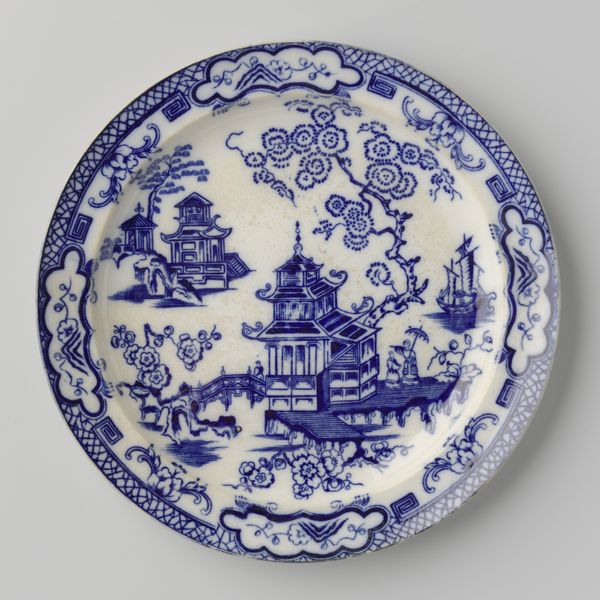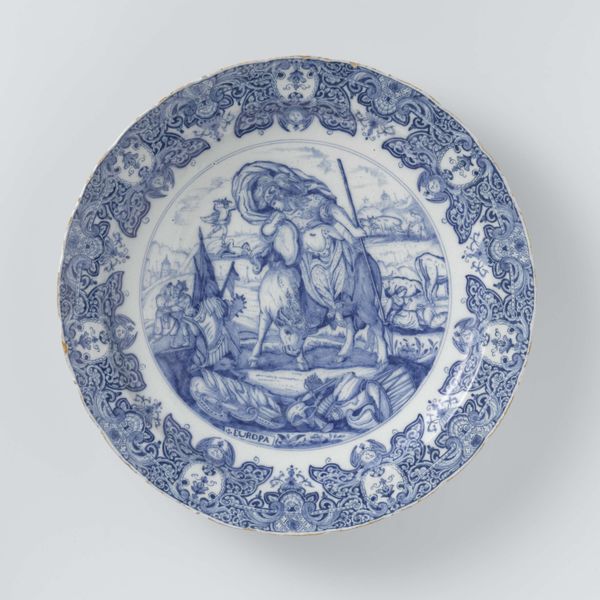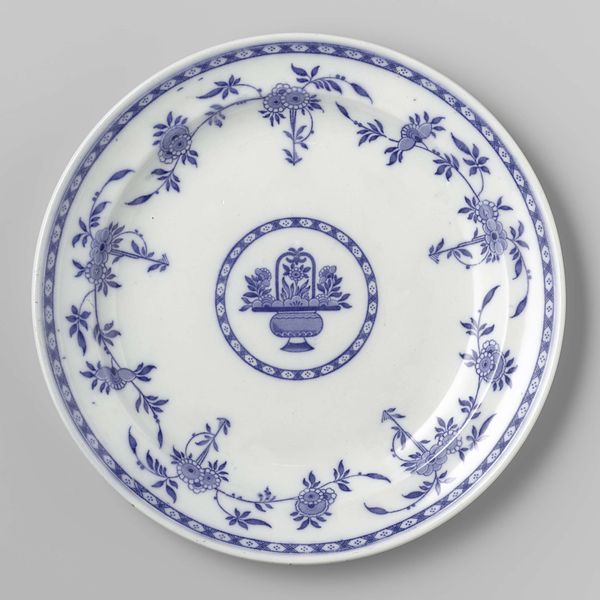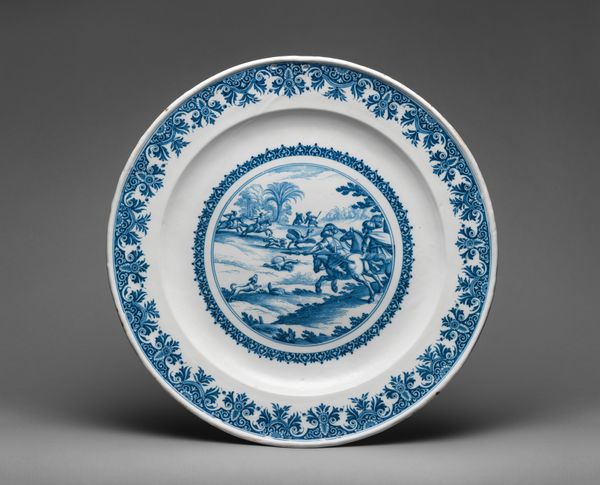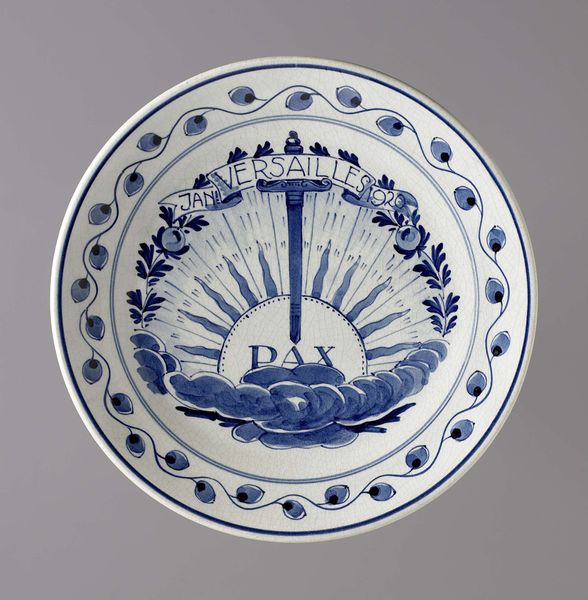
ceramic, earthenware
#
decorative element
#
pottery
#
asian-art
#
landscape
#
ceramic
#
earthenware
#
ceramic
#
earthenware
#
decorative-art
#
decorative art
#
miniature
Dimensions: 1 x 8 1/4 x 8 1/4 in. (2.54 x 20.96 x 20.96 cm)
Copyright: Public Domain
Curator: Here we have a plate dating back to 1737, an exquisite piece of earthenware currently residing here at the Minneapolis Institute of Art. The maker of this artwork remains anonymous. Editor: My first impression is one of serene detail. The cobalt blue on white is classically elegant, but the octagonal shape gives it an interesting edge. There’s so much miniaturized visual information. Curator: Indeed, it's quite telling how even common household objects became vehicles for propagating specific aesthetic values. The landscapes, inspired by Asian art, signify more than mere decoration; they were potent signifiers of cosmopolitanism. They speak to a world of luxury that became entangled with colonial ambition. Editor: I notice the scene unfolds in a continuous circular band within the center of the plate. Birds fly about freely over a pagoda nestled near some strange rock formations. What's the significance of featuring those pagodas so prominently? Curator: They are less literal architectural representations, and more emblems appropriated from chinoiserie designs—European interpretations and fantasies of Chinese aesthetics that circulated during the period. These were immensely popular. These romanticized visions contributed to a perception of the "Orient" filtered through a European lens, influencing trade, politics, and social relations. Editor: So, even in a piece as seemingly benign as this, we observe complex interactions of cultural exchange and the assertion of a certain European identity. The simple act of dining is, then, subtly infused with statements of global reach. Looking closely, the way that cobalt glaze pools in certain areas creates such beautiful variations and depth in the linear details. Curator: Precisely, even this sort of seemingly harmless piece of decorative art underscores the intricate webs of intercultural encounters and, yes, sometimes also exploitative trade dynamics inherent to its moment in time. It speaks volumes if we listen. Editor: Thank you, I didn’t consider how objects we interact with every day serve as tangible, accessible reminders of power and the legacy of those relationships, both here in museums and perhaps even at home on our walls or shelves.
Comments
No comments
Be the first to comment and join the conversation on the ultimate creative platform.
